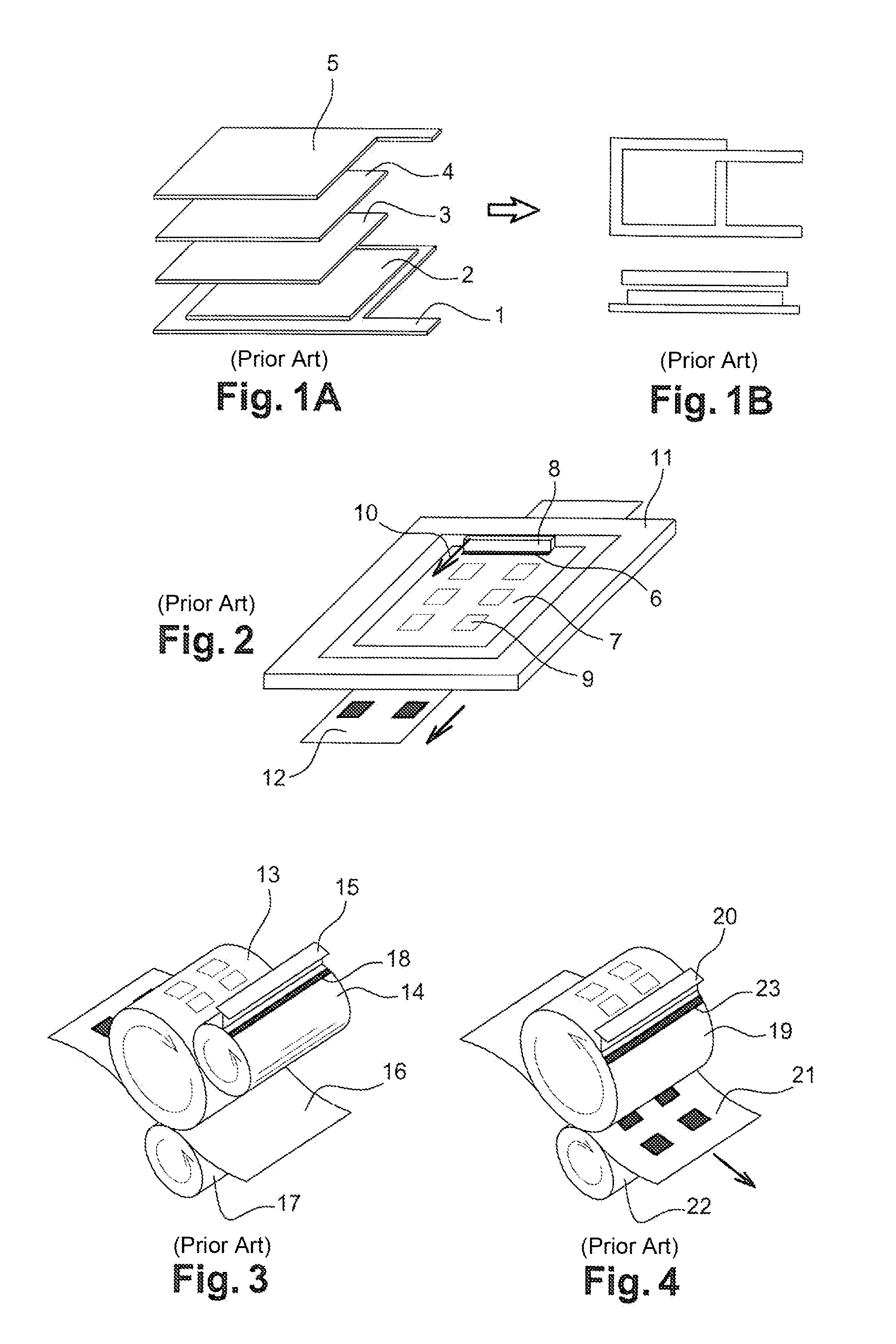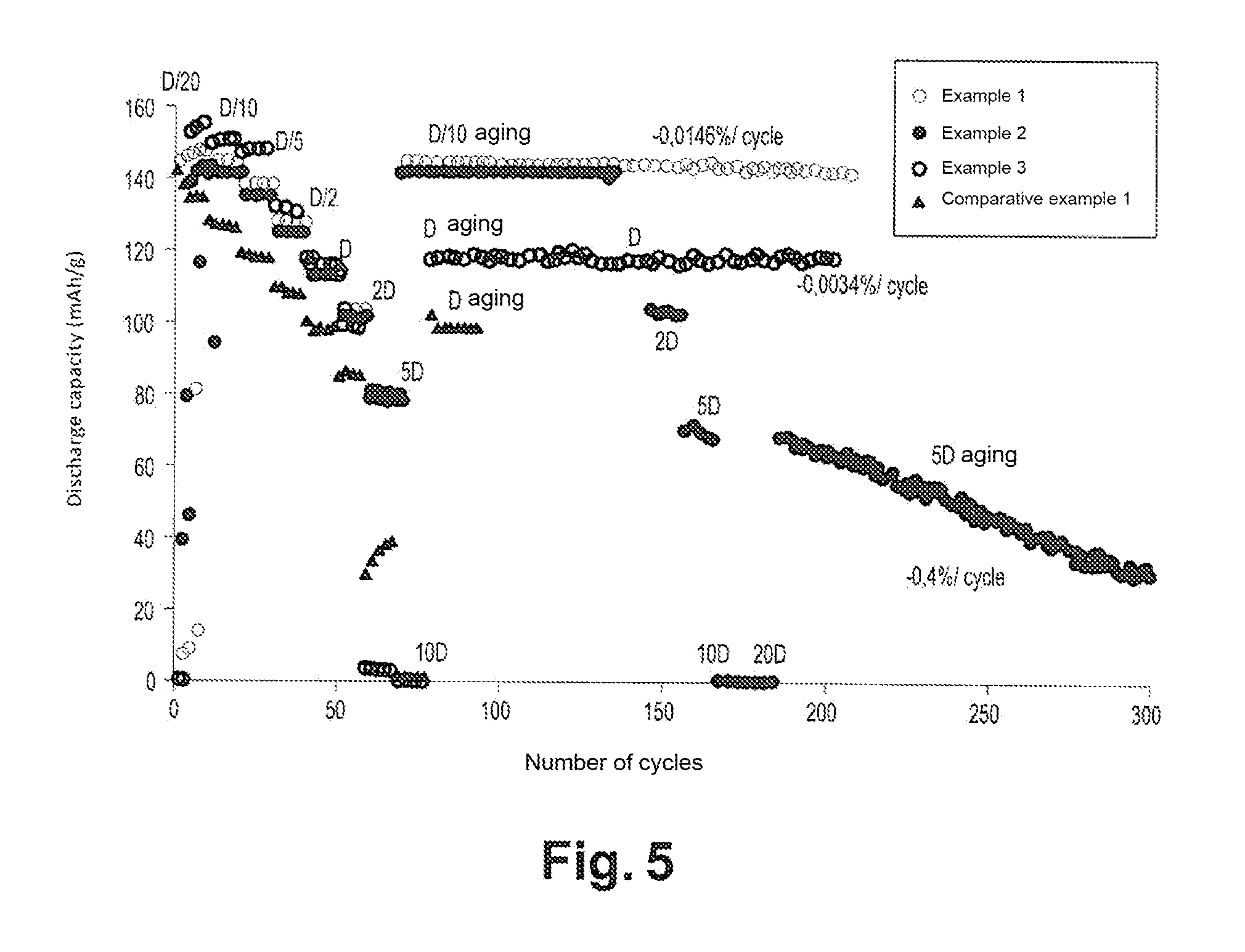Aqueous ink for the printing of electrodes for lithium batteries
- Summary
- Abstract
- Description
- Claims
- Application Information
AI Technical Summary
Benefits of technology
Problems solved by technology
Method used
Image
Examples
example 1
[0075]This example is illustrated in FIG. 5.
Materials:
[0076]In this example, the active material used is carbon containing LiFePO4 from Pulead Technology Industry. The electronically-conductive polymer used is a viscous grade of a PEDOT-PSS dispersion in water with additional binders from H.C.Starck Clevios GmbH and sold under trade name Clevios S V3 (resistivity of a printed film: approx. 700 Ω / sq, viscosity at ambient temperature: 60 dPa·s, measured dry extract: 6.5%).
[0077]The polyethylene used to separate the two electrodes of the button cell corresponds to grade Celgard 2400.
Forming of the Electrode and of the Button Cell:
[0078]A positive electrode is obtained by mixing 93.6 parts by weight of Pulead LiFePO4 and 6.4 parts by weight of PEDOT-PSS. Pure water, that is, deionized water, is then added to the mixture to obtain a dry extract of 45.1% by weight.
[0079]The ink is then mixed by means of a kinetic blade mixer at a 2,000 rpm for 30 min. An ink having a viscosity adapted to ...
PUM
 Login to View More
Login to View More Abstract
Description
Claims
Application Information
 Login to View More
Login to View More - R&D
- Intellectual Property
- Life Sciences
- Materials
- Tech Scout
- Unparalleled Data Quality
- Higher Quality Content
- 60% Fewer Hallucinations
Browse by: Latest US Patents, China's latest patents, Technical Efficacy Thesaurus, Application Domain, Technology Topic, Popular Technical Reports.
© 2025 PatSnap. All rights reserved.Legal|Privacy policy|Modern Slavery Act Transparency Statement|Sitemap|About US| Contact US: help@patsnap.com



